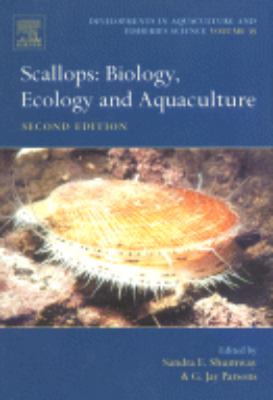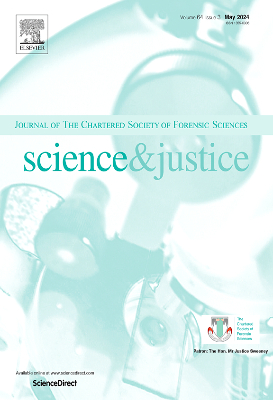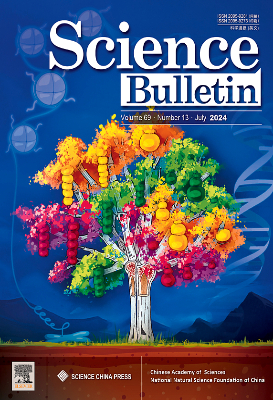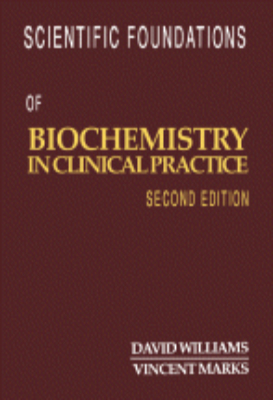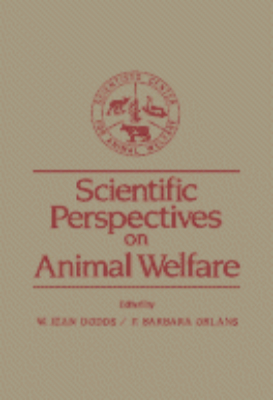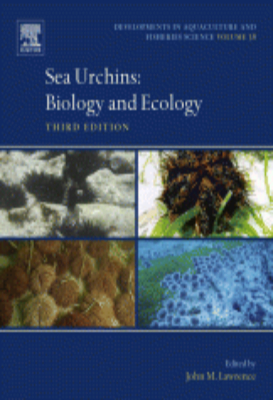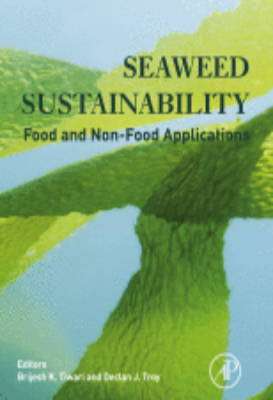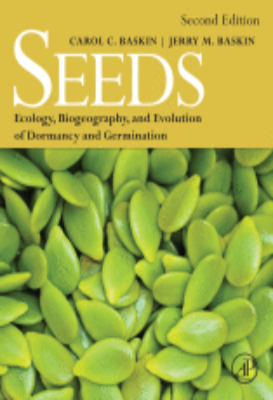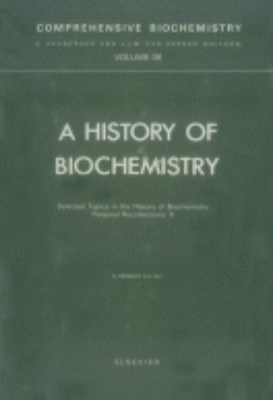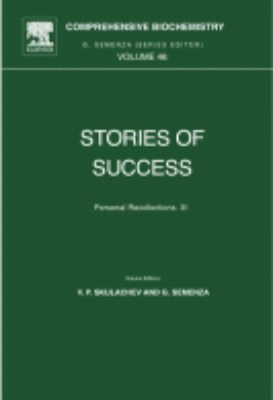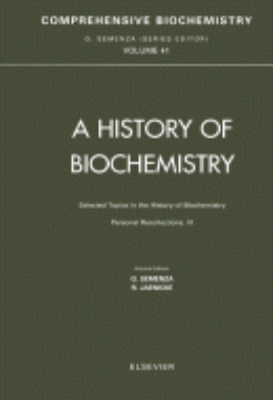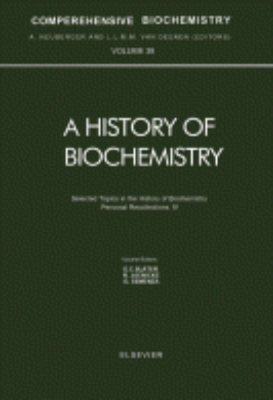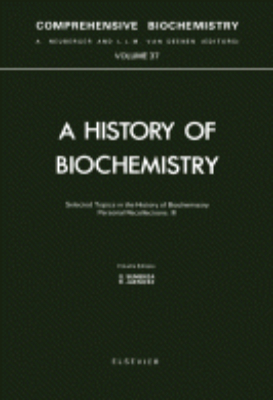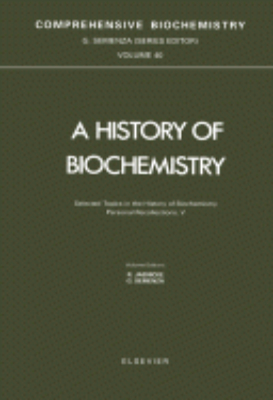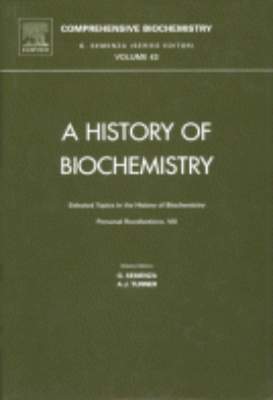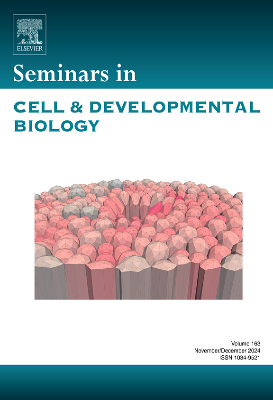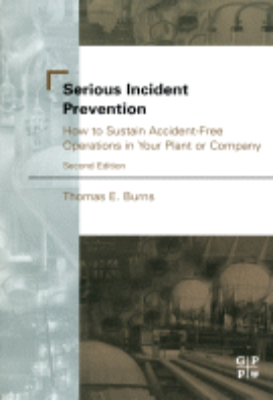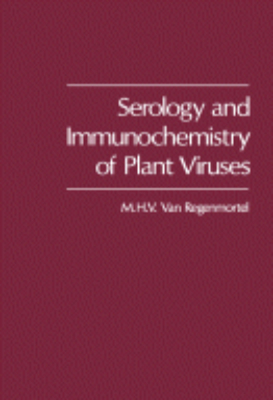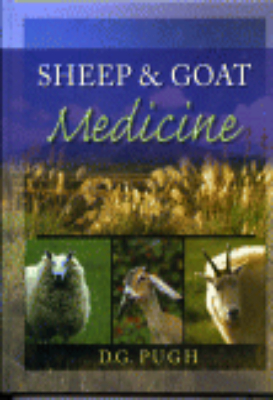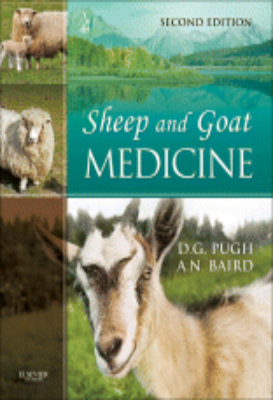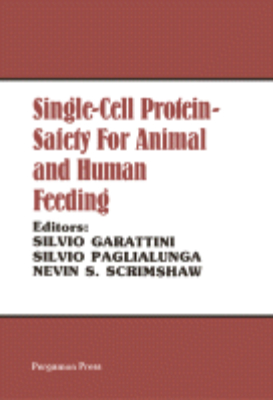E-Resources
Scientific Foundations of Biochemistry in Clinical Practice
Scientific Foundations of Biochemistry in Clinical Practice, Second Edition describes the pathological aspects of general metabolic disorders. This book is organized into 10 sections encompassing 45 chapters that discuss the nature of disorders involving disturbance in hydrogen ion concentration and blood gases, as well as the disorders of fluid and electrolyte balance. Some of the topics covered in the book are the chemical analysis of urine; neonatal screening for biochemical disorders; clinical biochemistry of alcohol, in intensive and postoperative care; psychiatric disorders of biochemical origin; abnormalities of the plasma proteins; assessment of gastrointestinal function; and calcium metabolism. Other chapters examine the nature, conditions, and diagnosis of bone disorders. A chapter emphasizes the functions of hypothalamus and pituitary. Another chapter looks into the biochemistry and toxicology of metals. The final chapters are devoted to the classification of connective tissue diseases and to the examination of clinical biochemistry of the central nervous system. The book can provide useful information to doctors, biochemists, students, and researchers.
Scientific Perspectives on Animal Welfare
Scientific Perspectives on Animal Welfare is a compendium of papers presented at the First Conference on Scientific Perspectives in Animal Welfare. This book discusses the role of scientists in the human use of animals in biomedical experiments. This text reviews the use of animals in medical research and also expounds on the work and goals of the Scientists Center for Animal Welfare. Section 1 discusses the responsibilities of the researcher involved in animal experimentations, including his choice of species and his compliance with guidelines and principles in the animals treatment. Section II describes the responsibilities of institutions involved in animal experimentation. One paper cites the Swedish Animal Welfare Act of 1944 with amendments incorporated in 1979 that can serve as a model. Section III describes the responsibilities of the funding agency in animal experimentation. One paper summarizes the agencys responsibilities to include evaluation of animal issues during preaward merits, random site visits, and accountability of concerned committees. Section IV covers editorial responsibilities in animal experimentation such as publication polices and tasks. Section V deals with public policy and recommendations. The text also outlines the responsibility of the individual researcher and scientific societies in determining public policy. This collection of papers is suitable for scientists and technicians whose work involves animal experimentations, for veterinarians, and for students whose disciplines are in medicine, biology, or chemistry.
Seaweed Sustainability
"Seaweed Sustainability: Food and Non-Food Applications is the only evidence-based resource that offers an abundance of information on the applications of seaweed as a solution to meet an increasing global demand for sustainable food source. The book uncovers seaweed potential and describes the various sources of seaweed, the role of seaweeds as a sustainable source for human food and animal feeds, and the role of seaweed farming for sustainability. In addition to harvesting and processing information, the book discusses the benefits of seaweed in human nutrition and its nutraceutical properties. Key Features. Offers different perspectives by presenting examples of commercial utilization of wild-harvested or cultivated algae, marine and freshwater seaweeds. Discusses seasonal and cultivar variations in seaweeds for a better understanding of their implications in commercial applications. Includes a wide range of micro and macro algae for food and feed production and provides perspectives on seaweed as a potential energy source"
Secondary Plant Products
The Biochemistry of Plants: A Comprehensive Treatise, Volume 7: Secondary Plant Products focuses on the biochemistry of secondary compounds, including tissue culture and differentiation, complexes, and plant systematics. The selection first elaborates on the physiological roles of secondary natural products, tissue culture and the study of secondary natural products, and turnover and degradation of secondary natural products. Discussions focus on degradative reactions of nitrogenous and phenolic compounds, concept of turnover of secondary products, and plant-vertebrate interactions. The text then elaborates on secondary plant products and cell and tissue differentiation; compartmentation in natural product biosynthesis by multienzyme complexes; and secondary metabolites and plant systematics. The manuscript examines the stereochemical aspects of natural products biosynthesis, nonprotein amino acids, and amines. Topics include tryptamines, phenethylamines, and histamine, nonprotein amino acids as analogues and antimetabolites, chemistry and biogenesis, and nonprotein amino acids as indexes for chemotaxonomy. The book also tackles glycosylation and glycosidases; transmethylation and demethylation reactions in the metabolism of secondary plant products; and oxygenases and the metabolism of plant products. The selection is a vital reference for researchers interested in the biochemistry of secondary compounds.
Securing Safe Water Supplies
Available water disinfection systems rely mainly on large-scale filtration and the combination of filtration (to remove solids), and subsequent application of chemical disinfectants. This has proven to produce water of acceptable quality. Important points for application in household systems are low complexity, few training requirements, and easy transportation and distribution as well as a sufficiently high acceptance by the user. Written and endorsed by the European Federation of Food Science and Technology this book compares a variety of purification systems. There is a growing evidence base on targeting water quality improvements to maximize health benefits, and it is believed that 4% of the global disease burden could be prevented by improving water supply, sanitation, and hygiene. Better tools and procedures to improve and protect drinking-water quality at the community and urban level, for example, through Water Safety Plans include the availability of simple and inexpensive approaches to treat and safely store water at the household-level.
Seeds
"The new edition of Seeds contains new information on many topics discussed in the first edition, such as fruit/seed heteromorphism, breaking of physical dormancy and effects of inbreeding depression on germination. New topics have been added to each chapter, including dichotomous keys to types of seeds and kinds of dormancy; a hierarchical dormancy classification system; role of seed banks in restoration of plant communities; and seed germination in relation to parental effects, pollen competition, local adaption, climate change and karrikinolide in smoke from burning plants. The database for the world biogeography of seed dormancy has been expanded from 3,580 to about 13,600 species. New insights are presented on seed dormancy and germination ecology of species with specialized life cycles or habitat requirements such as orchids, parasitic, aquatics and halophytes. Information from various fields of science has been combined with seed dormancy data to increase our understanding of the evolutionary/phylogenetic origins and relationships of the various kinds of seed dormancy (and nondormancy) and the conditions under which each may have evolved. This comprehensive synthesis of information on the ecology, biogeography and evolution of seeds provides a thorough overview of whole-seed biology that will facilitate and help focus research efforts. Key Features. Most wide-ranging and thorough account of whole-seed dormancy available. Contains information on dormancy and germination of more than 14,000 species from all the continents even the two angiosperm species native to the Antarctica continent. Includes a taxonomic index so researchers can quickly find information on their study organism(s) and. Provides a dichotomous key for the kinds of seed dormancy. Topics range from fossil evidence of seed dormancy to molecular biology of seed dormancy. Much attention is given to the evolution of kinds of seed dormancy. Includes chapters on the basics of how to do seed dormancy studies; on special groups of plants, for example orchids, parasites, aquatics, halophytes; and one chapter devoted to soil seed banks. Contains a revised, up-dated classification scheme of seed dormancy, including a formula for each kind of dormancy. Detailed attention is given to physiological dormancy, the most common kind of dormancy on earth"
Senescence and Aging in Plants
Senescence and Aging in Plants reviews the state of knowledge in the processes involved in plant senescence and aging. The book begins by discussing the emergence of senescence as a concept; experimental analysis of senescence; and patterns of senescence. It then examines membrane deterioration during senescence; photosynthesis in relation to leaf senescence; senescence of detached plant organs; changing patterns of nucleic acid and protein synthesis during senescence; and degradative and associated assimilatory aspects of nitrogen removal. This is followed by chapters on aspects of ethylene that may impinge upon its role in promoting senescence of higher plants; the role of cytokinins in plant senescence; the promoters and retardants of senescence; and the role of calcium in plant senescence. The concept of whole plant senescence is discussed, which can be subdivided into patterns, correlative controls, cessation of vegetative growth, declining assimilatory processes, assimilate partitioning, and hormonal controls. The final chapters cover the deterioration of cellular membranes during the plant aging process and seed aging.
Serious Incident Prevention:: How to Sustain Accident-Free Operations in Your Plant or Company
"This is your guide to creating a proactive, effective prevention process. This book presents a model showing you how to systematically identify and execute the steps needed to make your operations incident-free. Its team-based approach draws every level of the organization into the effort. Serious incidents affect a company's most important and most visible measures of performance, including profitability and company image. Use the author's ground-breaking method for preventing serious incidents, from a team perspective. Whether applied in real-life situations or in the classroom, this method will help you create a safer, more profitable plant. Up to date information and expanded topic coverage is provided in this new edition. There are two new chapters. One covers leveraging the power of behavior-based techniques and the other covers the benefits of developing teamwork skills. New material features case studies of corporations that have achieved a high degree of success from the implementation of Burns' techniques. Additionally, the author has included safety performance scorecards, a practical and effective tool for preventing serious incidents. Key Features. Updated with all new material on teamwork skills and behavior-based techniques. This unique method shows the user how to prevent serious incidents before they occur. Includes cases of real-life examples and safety performance scorecards"
Serology and Immunochemistry of Plant Viruses
Serology and Immunochemistry of Plant Viruses investigates the antigenic properties of plant viruses. It looks at the practical aspects of plant virus serology, along with the molecular basis of viral antigenicity, antigenic determinants in proteins, the structure of antibodies, virus purification, antiserum production, and the theoretical principles and practical implementation of the various serological techniques. It also considers the problems associated with identification and classification of plant viruses. Organized into 10 chapters, this volume begins with an overview of antigens and antigenic determinants before proceeding with a discussion of the immunochemistry of plant viruses, virus-antibody binding, the role of quaternary structure in antigenicity, and the structure of viral antigenic determinants. The reader is also introduced to the methods and principles of purifying plant viruses, preparation of antisera and purification of antibodies, antigen-antibody interaction, immunochemical techniques used with plant viruses, the role of quaternary structure on viral antigenicity, diagnosis of virus diseases, use of serological criteria for measuring the degree of relationship between viruses, and immunochemical studies of plant viruses. The book includes a bibliography with 1,400 references and a list of all the plant viruses that have been studied by serology. This book will be a useful resource for virologists and plant pathologists, as well as for students and research workers in plant virology, plant pathology, microbiology, and general virology.
Shedding of Plants Parts
Shedding of Plant Parts focuses on the anatomical, physiological, and ecological features of shedding of vegetative and reproductive parts of plants. This book encompasses both natural and induced shedding. Organized into 12 chapters, this book first outlines the extent of shedding of plant cells, tissues, and organs and summarizes the biological and economic implications of such shedding. Separate chapters follow that discuss anatomical and histochemical changes in leaf abscission; the physiological ecology and internal regulation of abscission; and the shedding of shoots, branches, bark, roots, pollen, seeds, and reproductive structures of forest trees. This book also explains the anatomical changes in abscission of reproductive structures, chemical thinning of flowers and fruits, and chemical control of fruit abscission. This book will be valuable to plant anatomists, pathologists, and physiologists, and to agronomists, arborists, biochemists, ecologists, entomologists, foresters, horticulturists, landscape architects, meteorologists, and soil scientists.
Sheep & Goat Medicine
This text is designed as a user-friendly textbook for the mixed practice large animal veterinarian. The text covers all aspects (medicine, surgery, theriogenology, and nutrition) of sheep and goats. Descriptions of common medical and surgical and reproductive procedures appear throughout the textbook enhanced by many photographs, diagrams, and charts. It covers all major body systems, herd health, physical examination, nutrition, anesthesia, and multisystem diseases. It is a practical, easy-to-read reference.
Sheep and Goat Medicine
Authoritative yet easy to read, Sheep and Goat Medicine, 2nd Edition covers all the latest advances in sheep and goat medicine, including medical treatment, surgery, theriogenology, and nutrition. Full-color photographs and clear instructions provide the answers you need, guiding you through common procedures and techniques such as restraint for examination, administration of drugs, blood collection, and grooming; these descriptions are often accompanied by explanatory diagrams and charts. With diseases, surgeries, and treatments organized by body system, information is always easy to find. New to this edition are chapters on parasite control, nutritional requirements, and performing a necropsy. Developed by Dr. D.G. Pugh, a world-renowned expert on the medical care of sheep and goats, this reference is unmatched for its comprehensive coverage of herd health, physical examination, anesthesia, and multisystem diseases.
Shellfish Safety and Quality
"Shellfish are a very popular and nutritious food source worldwide and their consumption has risen dramatically. Because of their unique nature as compared to beef and poultry, shellfish have their own distinct aspects of harvest, processing and handling. Edited by leading authorities in the field, this collection of review papers discusses issues of current interest and outlines steps that can be taken by the shellfish industry to improve shellfish safety and eating quality. Opening chapters provide an overview of the key issues associated with microbial and biotoxin contamination. Parts two and three then address in more detail methods to improve molluscan shellfish and crustacean quality and safety. Chapters focus on detection of algal toxins, monitoring and mitigation of the effects of harmful algal blooms, metals and organic contaminants, biofouling, disease control and selective breeding. Part four reviews legislation, regulation, public confidence in shellfish and risk management. Chapters on post-harvest issues, such as depuration, storage and packaging complete the volume. With its distinguished editors and international team of experts, Shellfish safety and quality is an essential reference for those in the shellfish industry, managers, policymakers and academics in the field. Key Features. Reviews the latest research on significant hazards such as microbial and biotoxin contamination. Discusses effective management of shellfish safety and quality, including emerging methods. Examines improved packaging methods"
Single-Cell Protein Safety for Animal and Human Feeding
Single-Cell Protein: Safety for Animal and Human Feeding covers the proceedings of the Protein-Calorie Advisory Group of the United Nations System Symposium Investigations On Single-Cell Protein, held at the Istituto di Ricerche Farmacologiche 'Mario Negri' Milan, Italy, on March 31 April 1,1977. This text is divided into three parts. The first part discusses taxonomy and pathogenicity, including topics on strengths and weaknesses of traditional criteria in the systematics of yeasts; DNA relatedness between physiologically similar strains and species of yeasts; and studies of potential pathogenicity of industrial yeasts. This book then explains the models of pathogenicity for yeasts of the genus Candida, as well as the characteristics and comparative studies of this genus. Metabolism and toxicology of odd-numbered carbon chain fatty acids are also tackled, which is the main topic of the second part of this book. The last part is concerned mainly with the metabolism and toxicology of alkanes. This publication will be invaluable to chemists and students of chemistry and related disciplines.

